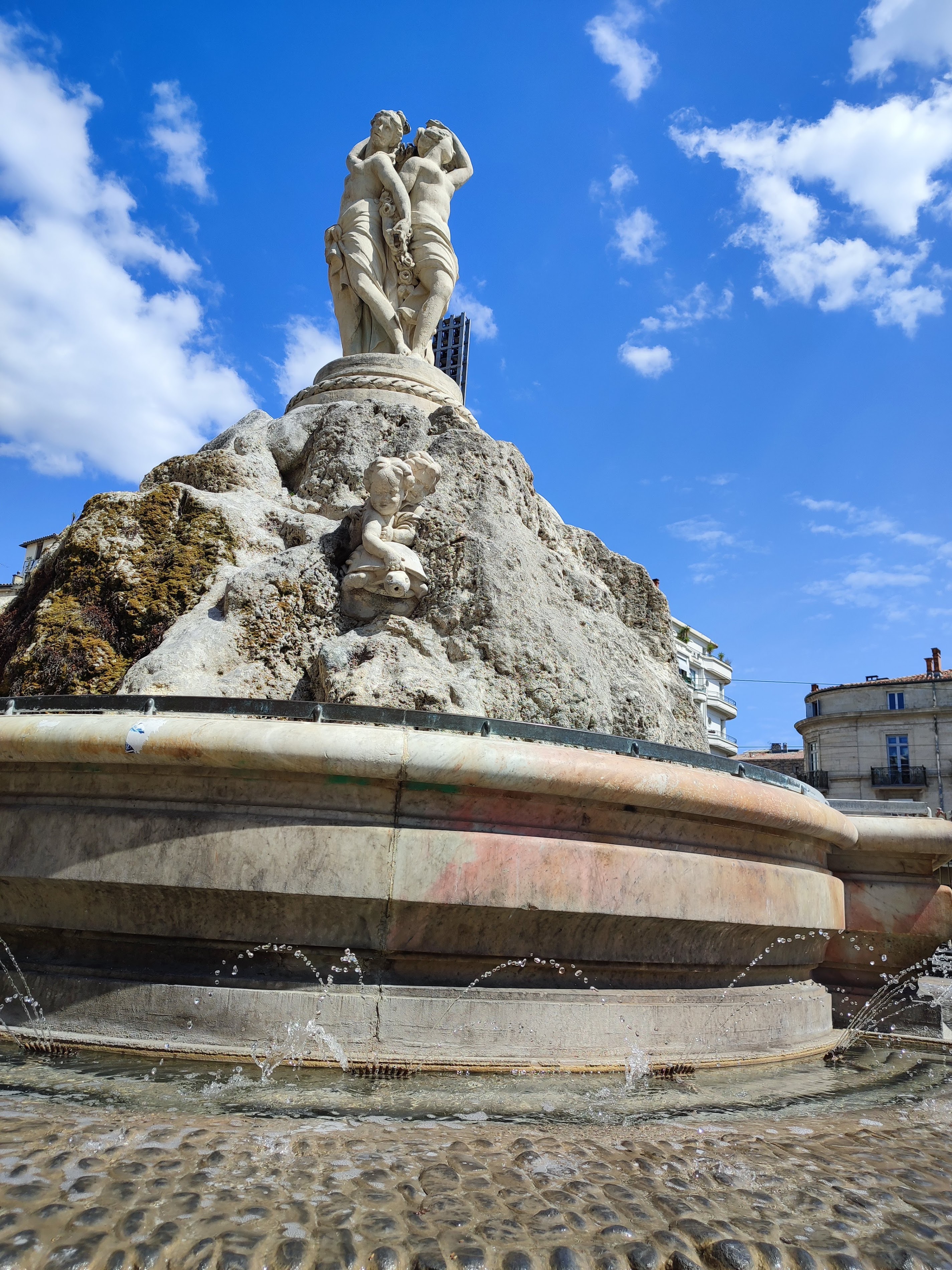Fountain of the Three Graces: A Symbolic Heart of Montpellier
In the heart of Montpellier's historic center, a masterpiece of neoclassical art and engineering can be found. The Fountain of the Three Graces, an iconic symbol of the city, stands as a testament to Montpellier's rich cultural heritage and artistic prowess. This enchanting fountain, with its intricate design and historical significance, has become a beloved landmark for both locals and visitors alike.

A Glimpse into History
The Fountain of the Three Graces was erected in 1773, during a period of significant urban development in Montpellier. It was commissioned by the city's governing body to enhance the beauty of the Place de la Comédie, Montpellier's main square. The fountain was designed by Étienne d'Antoine, a renowned sculptor of the time, who drew inspiration from classical mythology and Renaissance aesthetics.
Things to do in Montpellier
Artistic Marvel
The fountain's centerpiece is formed by three graceful female figures, representing the Three Graces of Greek mythology: Aglaea (Splendor), Euphrosyne (Mirth), and Thalia (Good Cheer). These figures are depicted in a circular formation, their arms intertwined in a gesture of unity and harmony. The statue is crafted from white marble, which stands in stark contrast to the dark stone basin below.
Intricate details can be observed in the sculpting of the Graces' flowing robes and delicate facial features. The fountain is further adorned with decorative elements such as floral motifs and classical architectural details, which are characteristic of the neoclassical style popular in 18th-century France.
Symbol of Montpellier
Over the centuries, the Fountain of the Three Graces has become more than just a decorative element in the cityscape. It has evolved into a symbol of Montpellier itself, representing the city's appreciation for art, culture, and classical learning. The fountain is often featured in postcards, tourist brochures, and local artwork, cementing its status as an iconic landmark.
For locals, the fountain serves as a popular meeting point and a backdrop for social gatherings. It's not uncommon to see people sitting on the fountain's edge, enjoying the lively atmosphere of the Place de la Comédie. During festivals and special events, the fountain is often illuminated, creating a magical ambiance in the heart of the city.
Preservation and Restoration
Given its historical and cultural significance, great care has been taken to preserve the Fountain of the Three Graces. Over the years, several restoration projects have been undertaken to maintain the fountain's structural integrity and aesthetic appeal. These efforts have ensured that future generations can continue to appreciate this masterpiece of public art.
In recent years, measures have been implemented to protect the fountain from environmental damage and vandalism. A subtle lighting system has been installed to highlight the fountain's features at night, while also serving as a deterrent to potential vandals.
A Living Legacy
Today, the Fountain of the Three Graces continues to captivate visitors with its timeless beauty and historical significance. It stands as a testament to Montpellier's rich cultural heritage and serves as a reminder of the city's commitment to preserving its artistic treasures.
Visitors to Montpellier are encouraged to take a moment to appreciate this magnificent fountain, to reflect on its symbolism, and to immerse themselves in the vibrant atmosphere of the Place de la Comédie. The Fountain of the Three Graces is not merely a static monument, but a living part of Montpellier's identity, continuing to inspire and delight all who encounter it.
For those interested in exploring more of Montpellier's architectural wonders, a visit to the Arc de Triomphe is highly recommended. This impressive structure offers a glimpse into another facet of the city's rich historical tapestry.

 Home
Home Wishlist
Wishlist